Golden Domino Damselfish (Dascyllus auripinnis)
With its bright, sulphurous fins set off brilliantly against a silvery body, there is no mistaking this sexy fish. But, despite its stately good looks, this species was only scientifically described in 2001, previously having been treated as nothing more than a colorful variation of D. trimaculatus. It might seem hard to believe that such drastically different fishes could be confused, but much of this has to do with the isolated distribution of D. auripinnis—the Line Islands, Phoenix Islands & Northern Cook Islands—and conflation with the superficially similar yellow-finned population found around Fiji.
The main trait to look for when identifying this species is the almost solidly yellow caudal, anal and pelvic fins, which, at the most, have a thin, black margin. This yellow often creeps up into the lower portions of the body, particularly in mid-sized specimens, but larger specimens often see this color retreat so that only the fins remain vividly yellow. The dorsal fin also has the familiar series of yellow lines common to the populations found further west.
Genetic data has highlighted the uniqueness of this species, but, interestingly, the study of Leray et al 2009 found evidence for a relationship with the similarly yellow fish from Fiji. In their interpretation, they suggest that the Fijian Domino Damselfish is derived from a blending of D. cf trimaculatus and D. auripinnis DNA. This would be a somewhat novel discovery with regards to the patterns of speciation observed in Pacific reef fishes. Relatively few species are endemic to this ecoregion, with some of the better-known examples being Chaetodon declivis and Xanthichthys greenei. If these names aren’t instantly recognizable, it’s because these are pretty rare fish in their own right—not many species are local to just this small stretch of ocean. But, for those that are, is there truly a close relationship with the nearby reefs of Eastern Melanesia and Western Polynesia… ¯\_(ツ)_/¯
Polynesian Domino Damselfish (Dascyllus cf trimaculatus)
One of the more surprising discoveries made with genetic study of this group is the existence of a very distinct population in the reefs of French Polynesia and the Cook Islands. Of course, this region is especially prone to harboring unique taxa, so it really isn’t all that surprising. But what is particularly confounding about this Polynesian population is its nearly identical appearance to the geographically disjunct D. cf trimaculatus found in the Western Pacific.
Both of these are primarily black fishes, with black fins and a black head, and both of these have the telltale white dorsal fin tip that separates the Pacific and Indian Ocean subgroups. So how do we tell them apart? From what I gather after examining dozens of photographed individuals, this population never possesses the yellow lines in the dorsal fin that so often pop up elsewhere in the Pacific. All have a solidly black fin, save for the white rear portion. Also noteworthy is the relative rarity of a “white morph”, with most documented individuals appearing black (though white specimens are still known from this region).
Marquesan Domino Damselfish (Dascyllus strasburgi)
The ghost of the Marquesas. This stunningly pallid creature might make for a decent faux-personatus angelfish, if not for the fact that this species is an even rarer fish. With a range restricted to the isolated Marquesas Islands of the South Pacific, it is, like everything else from this region, one of the ultimate “book fishes”.
While juveniles are essentially identical to those found elsewhere in the Indo-Pacific, the adults take on a ghastly white countenance. It’s been said that the Marquesas have unusually turbid water for a tropical coral reef ecosystem, so perhaps their pallor is an adaptation for increased visibility (or, conversely, camouflage?) against the hazy water surrounding them. Or perhaps it’s just a strange accident of nature caused by the genetic bottleneck of their existence.
Hawaiian Domino Damselfish (Dascyllus albisella)
Hawaii’s own novel take on this group is D. albisella, an interesting fish mixing some traits that we’ve previously encountered with a few that we haven’t. Morphologically, this species typically has one additional ray in the dorsal (16 v 15) and anal (15 vs 14) fins. Juveniles also sport an unusually enlarged medial white spot, noticeable wider and longer than in other populations, but this quickly reduces in size with age. Adults develop a permanent white color across most of the body, with black being restricted to the head and fins.
This fish occasionally finds its way into the hands of aquarists, but it is by no means a common (or even uncommon) offering. It’s range encompasses all of the Hawaiian archipelago, as well as Johnston Atoll to the south. At this latter location, the occasional yellow-tinged specimen has been observed, suggesting some possibly hybridization with the nearby Golden Domino Damselfishes at Kingman Reef.


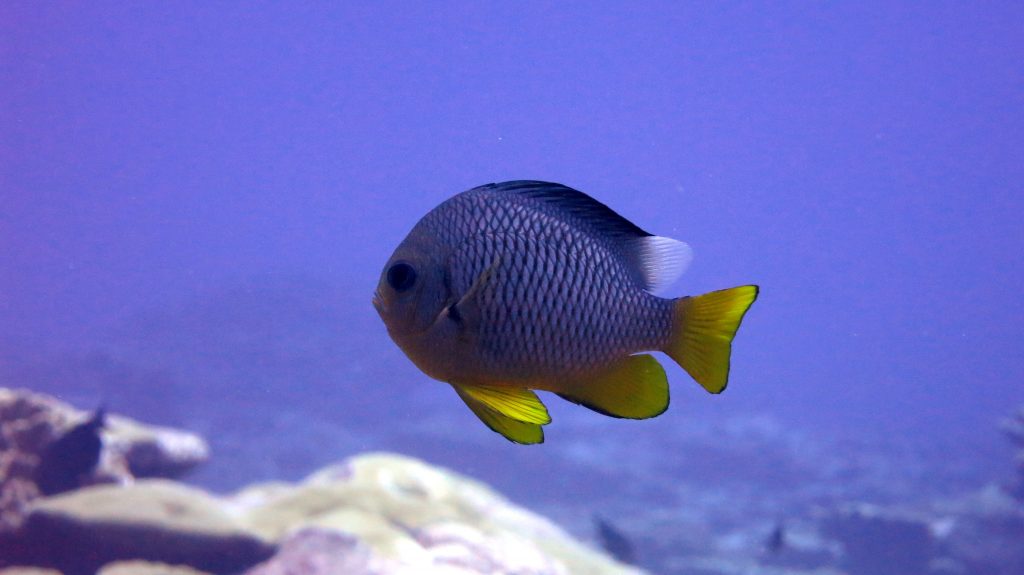
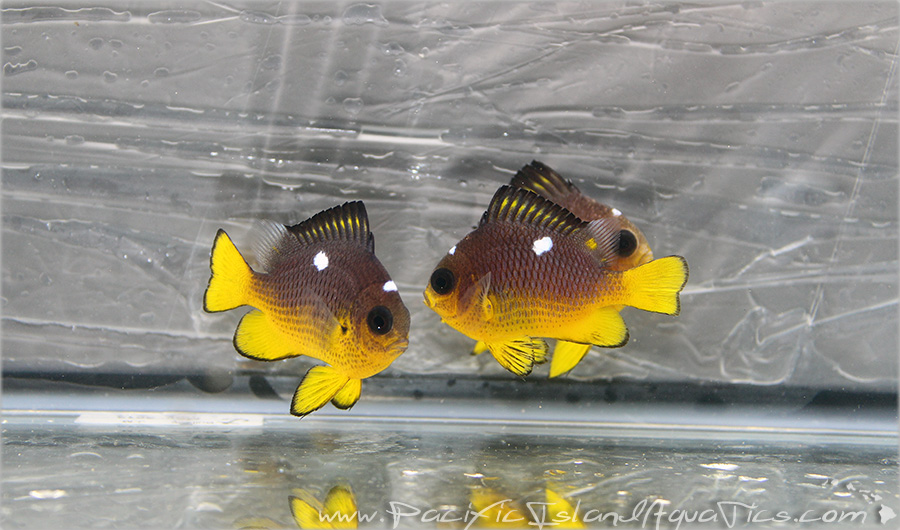
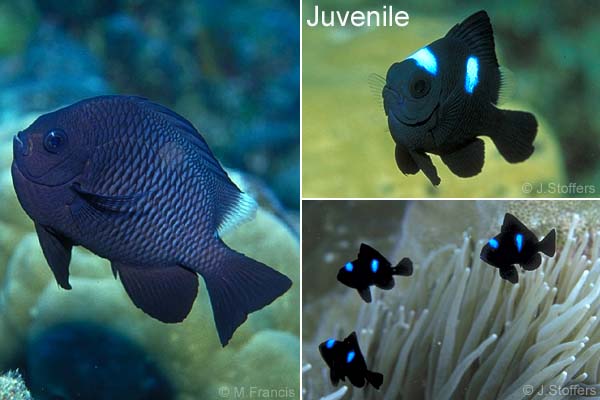
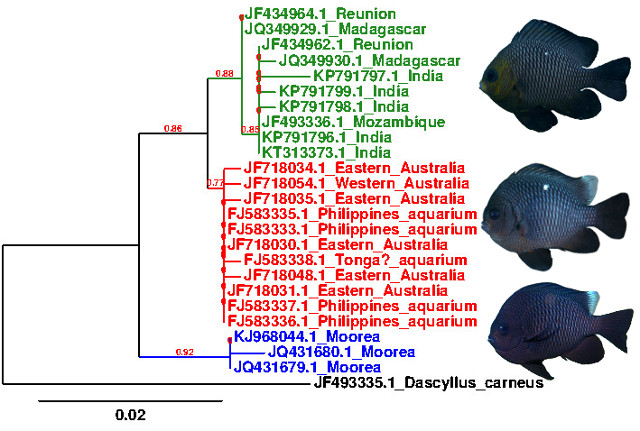
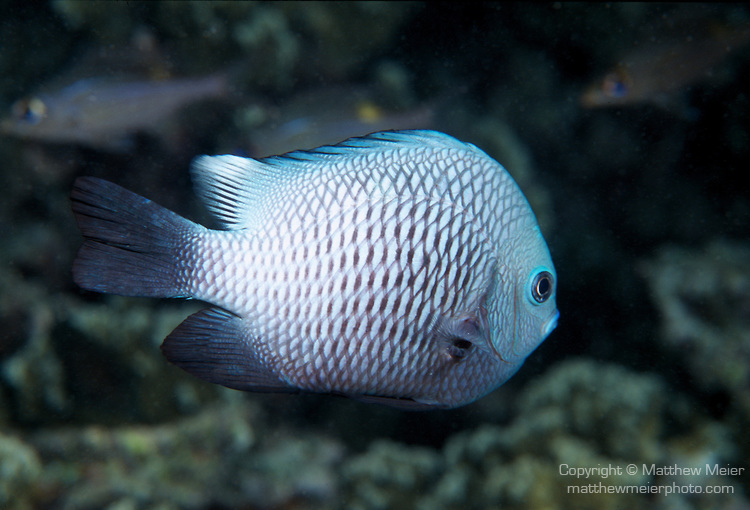
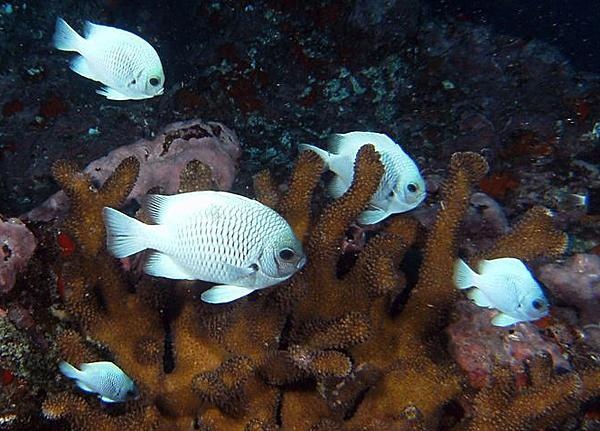
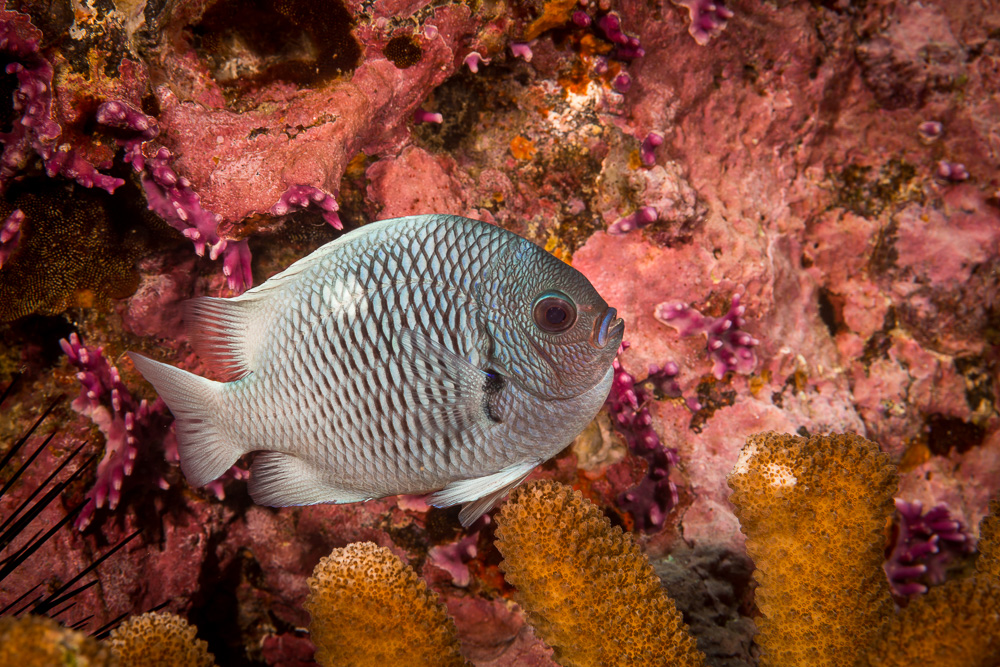
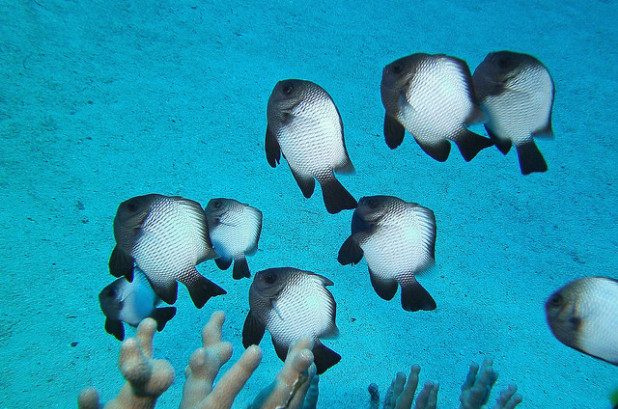
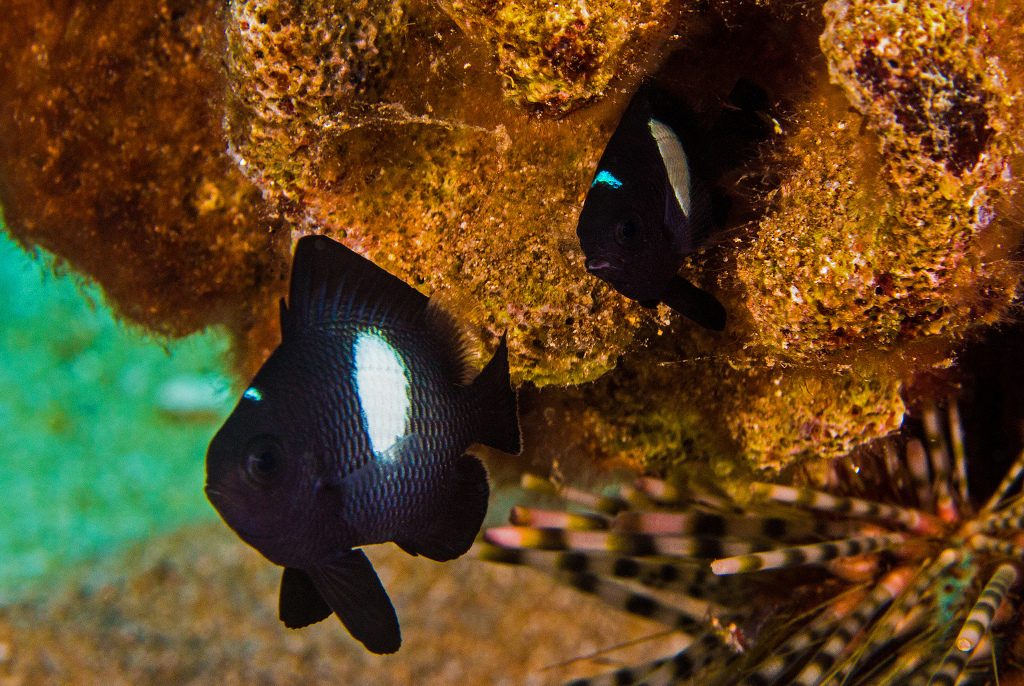









Do black damsel fish with white spots glow in the dark?